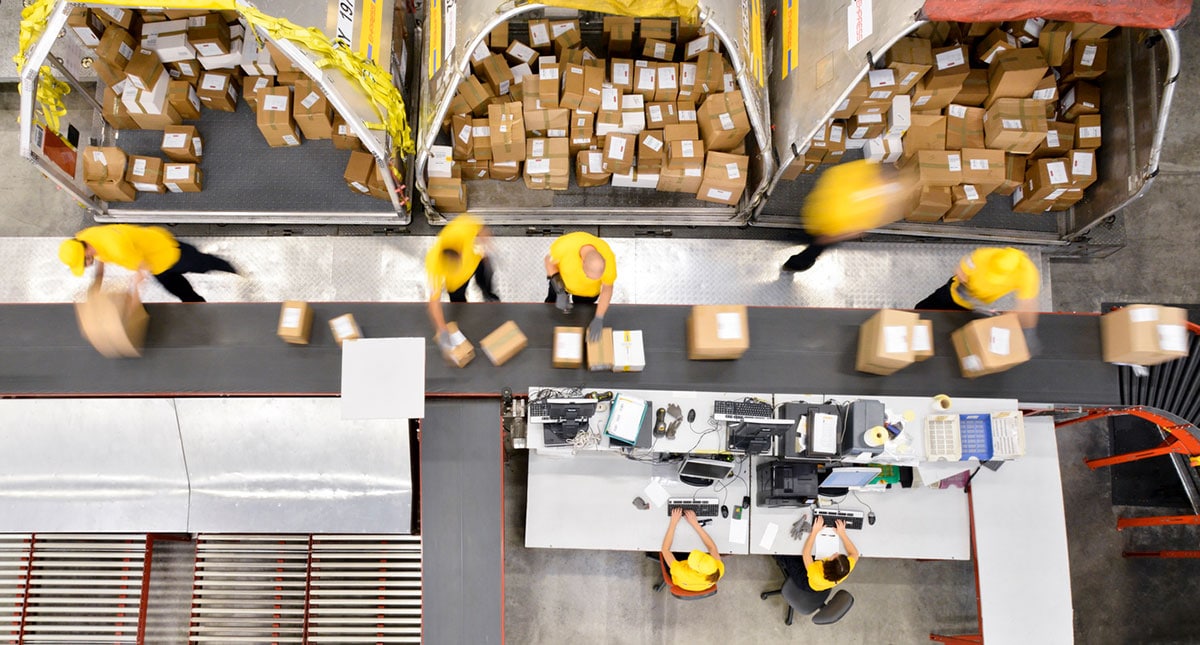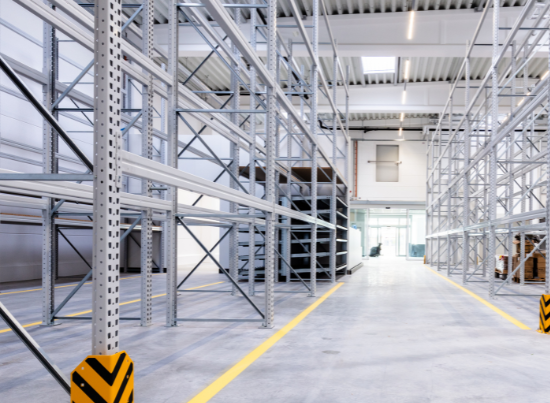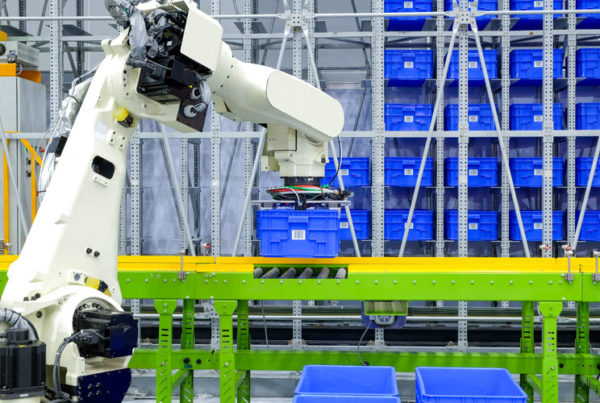Over the last 5 years, our industry has seen many changes and advancements in distribution and fulfillment, and they’re not slowing down.
We’ll continue to see our industry change over the next few years, especially as technology keeps expanding our capabilities. We’re facing new challenges – and opportunities – that come as fulfillment giants like Amazon continue to set new precedents for technological evolutions in operations.
It’s an exciting time for the industry. We’re all feeling it. So I recently sat down with Ross Halket, a 40-year veteran of the industry, to get his thoughts on how the industry has changed and why businesses need to keep in step with these changes to remain successful. This article summarizes our conversation and the forward-looking vision we both have for our clients and the industry.
There’s no argument that Amazon has evolved the capabilities of distribution and fulfillment.
The mass merchandiser isn’t focused on selling any one thing, but on selling everything from drugs to clothes and games. The way they’ve built their operations – and continue to integrate technology to optimize everything in their operational structure – is forcing the rest of us to advance in ways we didn’t think possible just a few years ago.
Before online retail, companies supplied unit loads – full pallet orders coming into and leaving a warehouse. But in the past five to ten years, the model has changed drastically. Customers are requesting smaller units more often, putting pressure on the distribution center to create different ways to efficiently pick either cases or eaches or both.
E-commerce has changed the game. Now, distribution centers are having to keep up with an omnichannel model, intaking orders from various sources while maintaining SLA’s, staffing appropriately and cost-effectively, shipping accurately and efficiently, and securing profitable margins. And businesses have to figure out how an e-commerce internet presence fits into their strategy and operations without disruption.

Mix in consolidation or acquisition of new business, and your operational model needs to be optimized with greater urgency than ever before.
A trend we’re seeing trip up some of our clients is the acquisition of new businesses. For example, when a business that used to only serve hospitals acquires a home healthcare business. They still need to grow their old business organically, but now also have to meet the needs of this entirely new market with its entirely new demands on distribution and shipping. So now, they have to figure out how to step up their distribution centers and their transportation strategy to be able to deliver to homes – efficiently and accurately.
When you consider the human-capital aspect of employee staffing and retention, the business case for advancing operations to match the standards of these smart e-commerce companies only strengthens.
Integrating smart e-commerce methodology to advance your operations.
Using a smart e-commerce methodology, successful companies have managed to gather data that highlights trends in inventory cycles. Problems that used to be complete mysteries now have… if not answers, then at least possible answers. What item is going to be moving fast out of your warehouse next week? What item that was moving last week is going to slow down this week? The data can tell.
With smart e-commerce, the right data, and algorithms, you can also look at everything in your system as a whole, giving you a full picture of your warehouse.
In the past, orders would come into a warehouse and three different people might interact with an SKU to fulfill three different orders. Later, that got upgraded when warehouses began staging hot items, and bringing that SKU out where it was easier to reach – which is still done today. And you’d do your best to batch items and interact with them in waves to limit the number of times people had to pick them.

But the data doesn’t work best alone. You need the right equipment to really access the power of data to drive operational advancements.
In the past, inventory in a warehouse would be handled by staging it – putting fast movers where they were easily reached and slow movers on shelving or somewhere that it could still be reached, but not as quickly. Now, with new technologies and the ability to leverage data, we’ve evolved the way we slot and pick items in a warehouse. We’re able to reduce the need for multiple people to touch each item – which, when you’re talking about a million SKUs a day, not only do those labor costs become astronomical, but it’s also not easy to find thousands of people who want to work in these warehouses.
Thinking about advancing your operations using data or automation?
These more advanced and evolved systems efficiently and accurately solve many – if not all – of the challenges of distribution. Whether you’re a retail chain with a storefront and a website, or a business that has recently expanded into new markets, or you are struggling to find ways to compete with online giants like Amazon, automating your distribution will help.
Even as they lose business to their own websites, retail stores still have to stock their shelves – ordering pallets out of their warehouses that are shipped to a single destination. But at the same time, they’re also getting a hundred different orders for the same black t-shirt, or the same black t-shirt but in a hundred different sizes, and they have to ship to all of those people, too.
Data and new technologies don’t just help these companies – companies that don’t begin to integrate these new technologies won’t survive in the long term. In short, it’s adapt or die.
Digitizing your information and infrastructure has another benefit, too – it can also help your employee acquisition and retention, a big component to successful fulfillment (the right people in the right place picking the right items efficiently). By understanding your inventory turns, your order cycles, fulfillment times, and more, your data can help create more effective staffing schedules which create greater shift predictability, improves employee morale, and reduces turnover.
Knowing when and how to advance is just as important as advancing your operations.
In an ideal world, you’d completely automate your operations, integrating the best equipment and software to do so. In reality, evolving your operations takes time and strategy.
You don’t need to spend a hundred million dollars today on a four-story, 250,000 square foot warehouse that’s fully automated. With a smart e-commerce approach, you can optimize your current warehouse before having to move to a larger square footage. You can integrate software and automation at your pace (and available capex budget). With the right integrator as your partner, you can plan for future growth when you’re ready for a fully automated conveyor system, vertical lift module (VLM), robotic palletizer, pick-to-voice or pick-to-light technology, automated storage and retrieval system (ASRS), automated guided vehicle (AGV), enhanced warehouse control system (WCS) or warehouse management system (WMS)… and the list goes on.
And these are ongoing processes. You can’t just go out and buy automation, turn it on, and think it’s going to work. Your personnel has to be trained. You’ll need new people in new roles to understand all of your data and the technology behind it. Where before you maybe needed a manager to create a schedule and handle problems, now you need engineers and logisticians – people who know how to crunch numbers and work with data and know what that data is telling you. To get the performance these systems promise, a company really needs to learn to understand them and to have the right people in place to use them.
This is an industry shift. And while it’s not an easy transition, anyone who isn’t ready to commit to changing and evolving with this shift may be making it easy for their competitors to beat them.






